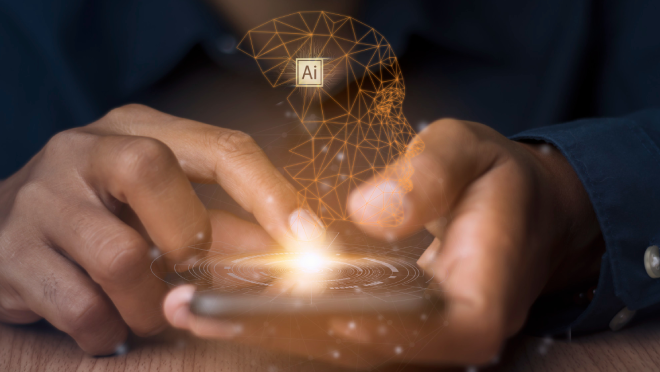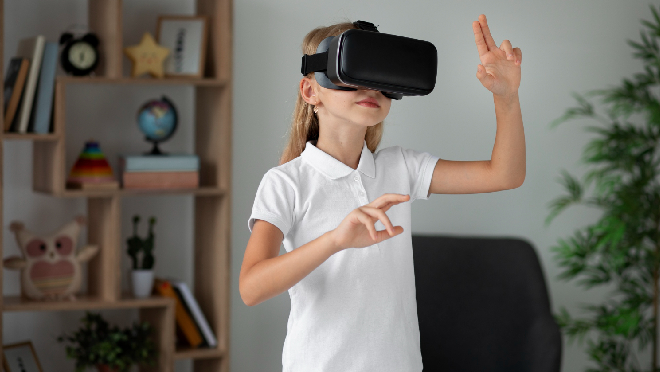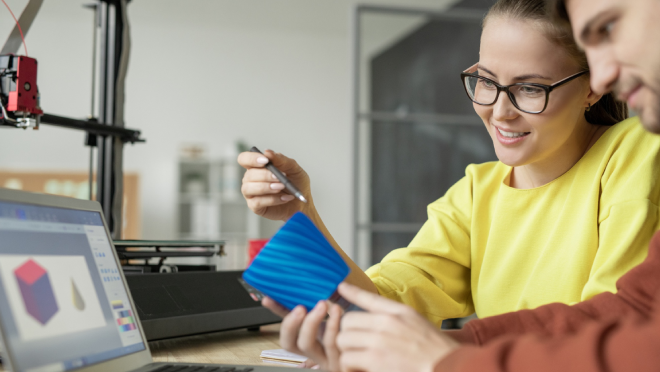Technology has caused a significant shift in the world, and this is even more so in education. Of all sectors, education has always been the most hesitant at embracing new technology. Still, with the beautiful innovations being developed by technology almost every day, education has finally learned to embrace what works.
With advancements in technology like virtual reality, artificial intelligence, and 3D virtual learning, education has finally been ushered into a new reality where only top technology is taking over.
Artificial intelligence technology stems from a lot of research, and education has acknowledged its impact. With the recent shutdown of the pandemic, technology has risen to hold the education forte.
In ways where education would have languished, technology has ensured that students can continue their education with zoom classes and the internet.
Here are the top technology innovations that have impacted education:
Table of Contents
Artificial Intelligence
Artificial intelligence (Al) is the newest and most profound technological advancement recorded in the world. Also called machine learning, it uses computer systems to simulate human thoughts and processes. In a classroom setting, this is particularly helpful for a teacher. We are aware that no machine can completely overhaul the needs of teachers and the quality they bring to the table, but this technology has only been created to assist the teachers in their jobs.
With artificial intelligence, the teachers can concentrate solely on each of their students. In contrast, the artificial intelligence can take care of the grading systems, computing, and giving feedback to the teachers based on the response of each child.

Another important benefit of Al is how it allows for students’ personalized learning. It can accommodate students based on their learning mode, learning speed, and preferences.
When it comes to tutoring, nothing beats a one-on-one tutor-student experience, but not all teachers have time outside of school to teach students. Artificial intelligence has no time off. It is always available 24/7 and has been built to answer academic questions in under 3 seconds, making it a great educational tutor.
Virtual Reality
It also improves knowledge retention because the students get to virtually experience what they were taught themselves.
The technology of Virtual Reality (VR) is the most innovative invention in the tech world today. It offers students the most experiential learning and gives them a first-hand experience right in their classrooms.


For instance, if you teach students about the seven wonders of the world using virtual reality, they can visit these places and see them with their own eyes while seated at their desks in class. This educational experience is not one they will forget in a hurry.
Creativity and interaction are also other benefits of VR in the education sector. After every experience, students are more likely to share their different encounters out of enthusiasm.
The education sector appreciates virtual reality because it breaks down learning and makes complex concepts fun and exciting for students to understand.
Comprehension has been a challenging factor in the educational system as students learn differently and sometimes find it hard to simply grasp the message teachers are trying to pass across. Virtual reality has ended this problem because now, such students can virtually live in the moment and understand it better.
3D Printing
3D printing has taken the learning process to a whole new level. With this technology model, objects are brought out of the computer screen and into the physical world through the use of 3d printers.
Students can touch these objects and inspect them closely for a better grasp of them. This is such a big wonder.


For instance, when teaching about certain museum artifacts, some students might not retain such information because they can’t process the image of such artifacts in their heads. To help them understand better, 3D printers are used to bring such artifacts out of the computer screen and into the hands of the students for physical manipulation and analysis.
Schools need to use this technology more because, just like virtual reality, 3d printing enhances students’ grasp and knowledge. It creates excitement because they can feel and touch these objects.
This is especially great for visual learners.
Digital devices
Digital devices like smartphones, laptops, tablets, and iPads have provided more convenient methods of learning.
Smartphones used to be banned in schools because teachers saw them as a distraction tool, which it was. However, with the advancements in technology, many educational apps have been designed for smartphones and other devices.


We have apps like Khan academy, Google classroom, Quick math, Kahoot, Duolingo, etc.
These apps can be used to solve mathematical, English, language, and other academic problems.
Tablets are another portable tool to help students in their academic activities. With these devices, you can take zoom calls, attend virtual classes, and watch 3d videos online. Assignments have also been made easier for students, as you can always submit them online.
Social Media
Social media is not always about chatting and meeting new friends full-time. There are social media apps where students can learn and have fun at the same time.


These educational apps were specially created for students to connect and organize meetings, even continents apart.
A social media app that is great for education is YouTube. This app is where you can watch tutorial videos on any subjects you find difficult to grasp, as millions of free videos are available on this platform. Some tutors teach complex subjects and upload materials to enable you to understand better. This method of learning is easy to digest.
Another social media app that is great for education is Tiktok. On this app, you can find and learn absolutely any content. From biology to culinary skills, to physics, to dance.
The knowledge on the app is unquantifiable, and as a student, you can access that wealth of knowledge just by using the internet.
Conclusion
Technology has taken the world by storm, and if we are to discuss all the innovations it brings, it will be a lot to digest. However, we have seen how these changes have positively uplifted education and shifted learning into a more accessible and convenient process.




